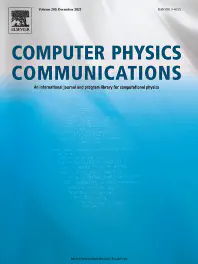Computational performance of SequenceL coding of the lattice Boltzmann method for multi-particle flow simulations

Abstract
This paper reports, for the first time, the computational performance of SequenceL for mesoscale simulations of large numbers of particles in a microfluidic device via the lattice-Boltzmann method. The performance of SequenceL simulations was assessed against the optimized serial and parallelized (via OpenMP directives) FORTRAN90 simulations. At present, OpenMP directives were not included in inter-particle and particle–wall repulsive (steric) interaction calculations due to difficulties that arose from inter-iteration dependencies between consecutive iterations of the do-loops. SequenceL simulations, on the other hand, relied on built-in automatic parallelism. Under these conditions, numerical simulations revealed that the parallelized FORTRAN90 outran the performance of SequenceL by a factor of 2.5 or more when the number of particles was 100 or less. SequenceL, however, outran the performance of the parallelized FORTRAN90 by a factor of 1.3 when the number of particles was 300. Our results show that when the number of particles increased by 30-fold, the computational time of SequenceL simulations increased linearly by a factor of 1.5, as compared to a 3.2-fold increase in serial and a 7.7-fold increase in parallelized FORTRAN90 simulations. Considering SequenceL’s efficient built-in parallelism that led to a relatively small increase in computational time with increased number of particles, it could be a promising programming language for computationally-efficient mesoscale simulations of large numbers of particles in microfluidic experiments.